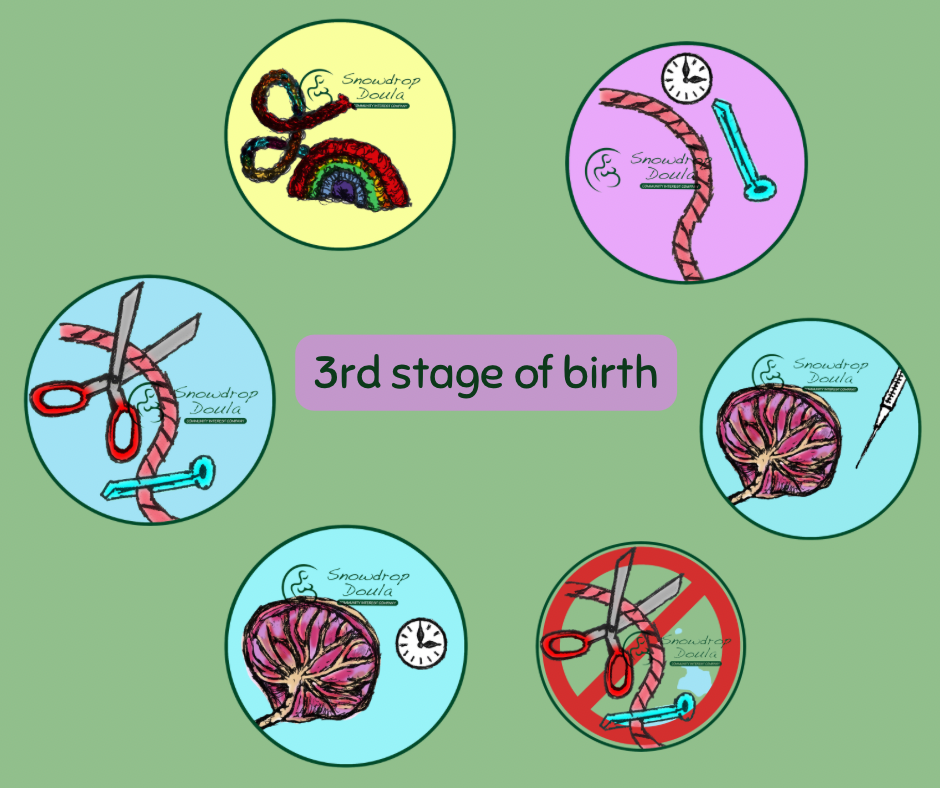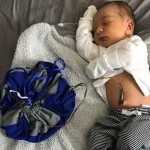After the birth of your baby the umbilical cord will come away and form the belly button for the baby. The umbilical cord is attached to the placenta and all needs to come away in some form as it is no longer needed to provide nutrients to the baby. Most are clamped and cut at birth more often this is delayed cord clamping. It is not thought cutting the cord causes any pain or distress to the baby, there’s no evidence to suggest this. Here are some options.
Immediately clamped and cut – Managed 3rd stage.
There is an injection offered post birth to help with the birth of the placenta and also to manage any heavy bleeding. The umbilical cord needs to be clamped (and cut ideally) for this to be given. With a managed 3rd stage the placenta is usual born within around 30 minutes, usually much quicker.
Leave until placenta is born – Physiological 3rd stage.
There has been research to suggest that immediately cutting the umbilical cord meant that babies could be losing up to 1/3 of the blood volume that the could get if left. With this includes stem cells. So there has been campaigns to ”Wait for white”.
A physiological 3rd stage of birth means you are opting to let nature take its course. A full physiological 3rd stage would wait until the placenta is born to cut the cord. As most opt for the injection there is some debate on how long it is normal and safe to leave the placenta in situ. There is some suggestion that if the placenta has not come away an hour after birth then perhaps some help is needed.
Delayed cord clamping
Delayed cord clamping can mean somewhere in the middle of the previous two options. There’s theory that the umbilical cord (and placenta) has passed all its’ nutrients, blood and stem cells, by the time the cord has turned white. This can happen within 5-20 minutes post birth. Some may choose to do this and then clamp and have the injection to help the placenta. Others may cut at this point and not have the injection.
Lotus birth
This option may seem a bit ”woo” to many but is a valid choice. This is where the cord and placenta is left attached until it all dries and falls off together in a few days. The placenta is kept in a bag whilst attached with fragrant herbs etc on the placenta. There are numerous reasons why families may choose this option.
There are always various options for all aspects of pregnancy, birth and parenting. What suits one family may not suit another.


